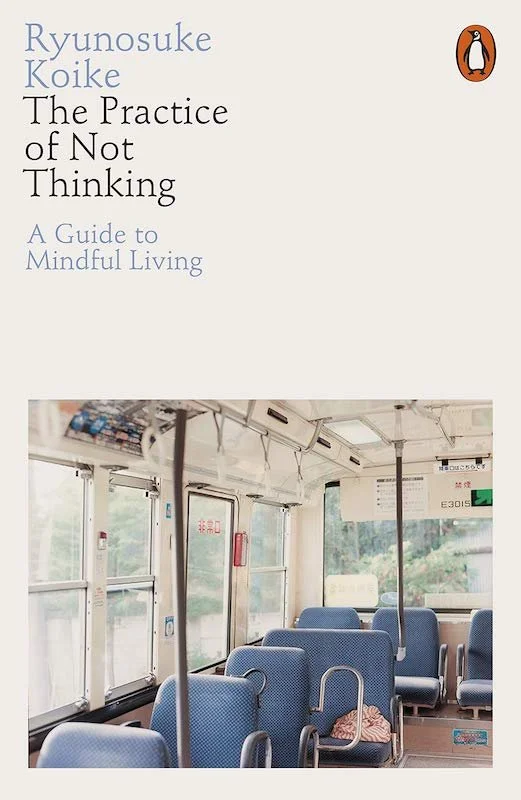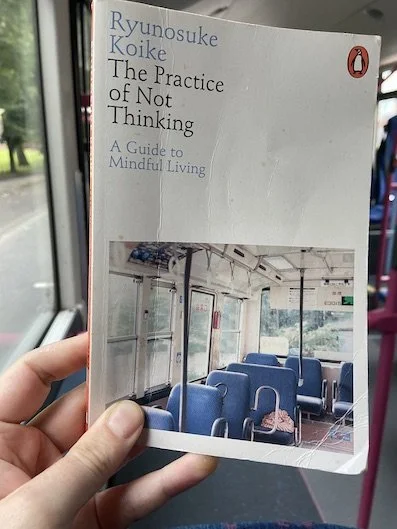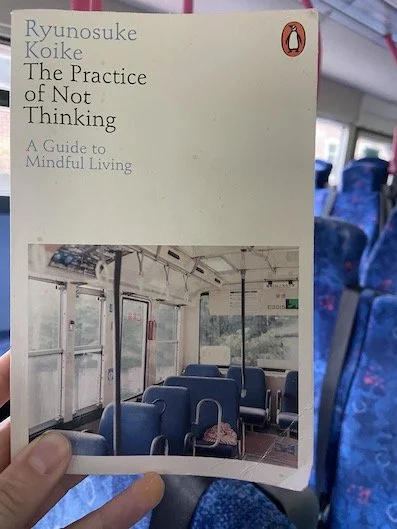Book Review - The Practice of Not Thinking by Ryunosuke Koike
‘The Practice of Not Thinking’ by former monk Ryunosuke Koike is an exploration of the power and potential of clearing one's mind and embracing a state of non-thinking. In this engaging book, the author invites us to look at the way we perceive and engage with our own thoughts.
Mindfulness
‘Thinking about not thinking only means we are doing more thinking and it isn’t going to prevent us from thinking’
When I awaken, one of my goals is to be more mindful as my morning begins. That’s why I read books like this as part of my ‘Voyage of the Dawn Reader’ series, to encourage open awareness and acceptance, before my day invariably turns to shit.
Zen Buddhism and Taoism concepts aren’t always the easiest to understand, but Ryunosuke does a good job of presenting complex philosophical concepts in a clear and accessible manner. However, he doesn’t limit himself to eastern perspectives; he also explores ideas from western philosophy, psychology, and neuroscience.
In ‘The Practice of Not Thinking’ He introduces various techniques, ranging from meditation to mindfulness exercises, to help you detach yourself from ‘thinking disease’ and reconnect with the present moment. It offers plenty of advice on how to bring mindfulness into your life by examining your actions and behaviour as you go about your day.
How to control your body and your mind
In a section entitled ‘How to control your body and your mind’, Ryunosuke looks at everyday activities that we all engage in. Speaking, listening, seeing, reading and writing, eating, discarding, touching and nurturing.
We all suffer from the ‘thinking disease’ and block out the five senses. We need to move from the passive to the active.
We see without looking
We hear without listening
We notice a smell but don’t actually smell it
We taste something but don’t savour it
We touch something but don’t feel it.
Minimalism
I particularly like the section on discarding, which is very much about minimalism, and getting rid of what you don’t need. I had a look at my book shelves and filled a couple go bags, which I took to the local charity shops.
The section on writing was also interesting, as we spend so much time online and it was good to see that addressed. How we are quick to anger when an anonymous person contradicts us on the internet. Something which I need to take note of was
‘seeking to fulfil the desire to be recognised by other people is a waste of time and simply feeds our ego. If you are in the habit of checking the amount of traffic or comments you receive on your blog or social media, I would suggest stepping away from that routine.’
This is something I have started to do, and I now look at my traffic on this blog every hour instead of every 15 minutes. Small steps!
Klesha’s
If you’ve read this blog before, you’ll know that I have a strong interest in books on meditation and mindfulness, so a lot of the book was covering familiar ground. It’s difficult to read any new perspectives on the subject, but I think applying techniques to modern living, as this book does, is the way to go.
Ryunosuke talks a lot about Klesha’s which are something I haven’t heard of before. It’s basically a disturbing emotion, such as a fear or ignorance, which clouds our minds, and leads to unhealthy actions.
An example of a Klesha is greed, such as a desire to be accepted and avoid being disliked. People commenting on this blog feeds my klesha to be liked, to have written something interesting. Seeing a comment reduces the pain, but it’s only temporary. (Don’t be leaving comments, it only feeds my Kleshas.)
One section in ‘The Practice of Not Thinking’ that resonated with me was when he wrote that 'pleasure doesn’t exist physically - it is an illusion that we experience pain reduces, and the brain interprets the absence of pain as pleasure. ‘
Writing Style
It is written for a Japanese audience, so there were parts and language that just didn’t resonate with me. But that’s ok, because I was able to get the overall message and ideas. Ryunosuke’s writing style throughout is engaging and thought-provoking.
Like I said earlier, some of it can feel repetitive, particularly when discussing similar ideas or concepts across different chapters. But I think an amount of repetition is okay, as it helps reinforce key concepts and give a you a deeper understanding.
I also enjoyed the conversation at the end between Ryunosuke and the neuroscientist Yuki Ikegaya, where they discuss subjects such as pain, free will and faith. It’s an interesting section, and I always enjoy reading about how mindfulness intersects with these subjects, and how it’s understood from a scientific perspective. It reminded me another fascinating book I read about brain plasticity.
The Practice of Not thinking Summary
Overall, "The Practice of Not Thinking" is a thoughtfully written book that I found informative and engaging. I liked how it was laid out, describing how to bring mindfulness into everyday aspects of our lives. I think he’s good at explaining some of the more complicated aspects of Buddhism, and even though it’s aimed at a Japanese audience, with a certain amount of repetition, it’s definitely a good book to deepen your understanding of mindfulness in your daily interactions.
The book will certainly get your thinking about why you maybe think too much. That’s probably something you’re aware of already, but this book will hopefully help you to take steps to reduce the ‘thinking disease’ that Ryunosuke refers to. Recommended.
Amazon UK Amazon US Bookshop.org
144 Pages Paperback
June 10, 2021 by Penguin UK




